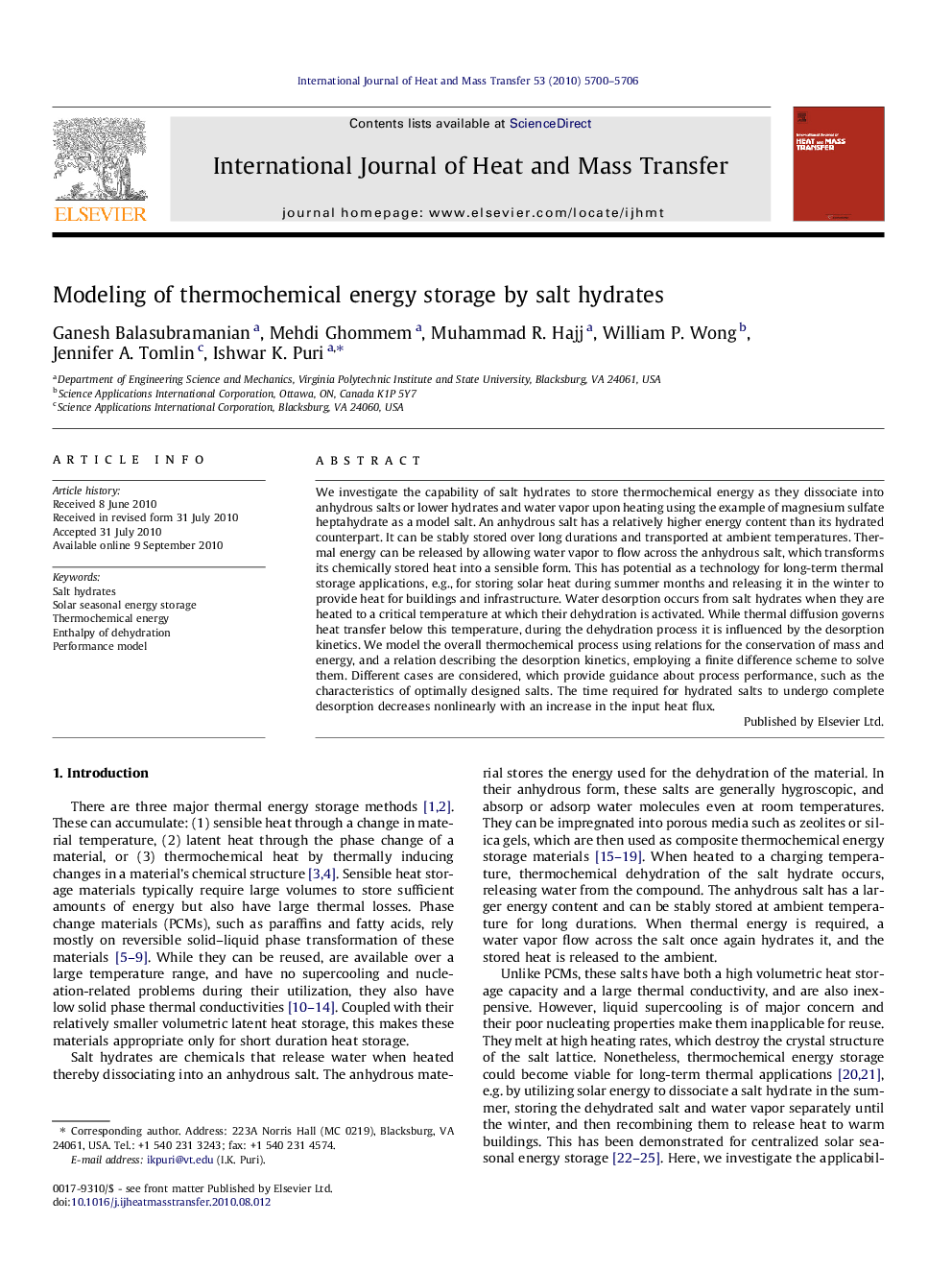| Article ID | Journal | Published Year | Pages | File Type |
|---|---|---|---|---|
| 660714 | International Journal of Heat and Mass Transfer | 2010 | 7 Pages |
We investigate the capability of salt hydrates to store thermochemical energy as they dissociate into anhydrous salts or lower hydrates and water vapor upon heating using the example of magnesium sulfate heptahydrate as a model salt. An anhydrous salt has a relatively higher energy content than its hydrated counterpart. It can be stably stored over long durations and transported at ambient temperatures. Thermal energy can be released by allowing water vapor to flow across the anhydrous salt, which transforms its chemically stored heat into a sensible form. This has potential as a technology for long-term thermal storage applications, e.g., for storing solar heat during summer months and releasing it in the winter to provide heat for buildings and infrastructure. Water desorption occurs from salt hydrates when they are heated to a critical temperature at which their dehydration is activated. While thermal diffusion governs heat transfer below this temperature, during the dehydration process it is influenced by the desorption kinetics. We model the overall thermochemical process using relations for the conservation of mass and energy, and a relation describing the desorption kinetics, employing a finite difference scheme to solve them. Different cases are considered, which provide guidance about process performance, such as the characteristics of optimally designed salts. The time required for hydrated salts to undergo complete desorption decreases nonlinearly with an increase in the input heat flux.
